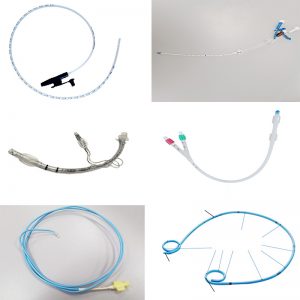Inserting a closed suction catheter is a common medical procedure that is performed to maintain the patency and hygiene of the airways in patients who require mechanical ventilation. Closed suction catheters are used to remove secretions from the airway without interrupting mechanical ventilation, which is important to prevent respiratory complications.
Before attempting to insert a closed suction catheter, it is essential to understand the anatomy of the airway and the equipment needed for the procedure. The following is a step-by-step guide on how to insert a closed suction catheter.
Step 1: Preparation
The first step in the procedure is to gather all the necessary equipment. This includes a closed suction catheter, sterile gloves, suction machine, sterile saline solution, and a sterile tray. The clinician should also perform hand hygiene and put on sterile gloves and a mask.
Step 2: Positioning the Patient
The patient should be in a semi-Fowler’s position, with the head of the bed elevated at a 30-45 degree angle. This positioning helps to improve lung ventilation and provides better visualization of the airway.
Step 3: Preparing the Catheter
The clinician should check the length of the catheter before inserting it into the airway. The length of the catheter should be approximately the distance from the nostril or mouth to the carina. The catheter should also be checked for any signs of damage or deformity before use.
Step 4: Inserting the Catheter
The clinician should insert the catheter into the nostril or mouth, aiming towards the back of the throat. It is important to use a gentle and steady pressure while inserting the catheter to avoid causing trauma to the airway. The catheter should be advanced until it reaches the carina, which can be confirmed by the presence of resistance or a change in resistance.
Step 5: Suctioning
Once the catheter is in the airway, the clinician should connect it to the suction machine and set the appropriate suction pressure. The catheter should be withdrawn slowly while applying suction to remove secretions from the airway. This process should be repeated until the airway is clear of secretions.
Step 6: Flushing
After suctioning, the clinician should flush the catheter with sterile saline solution to remove any remaining secretions and prevent infection.
Step 7: Removal
The catheter should be removed gently and slowly to avoid causing trauma to the airway. The patient should be monitored closely for any signs of distress or complications after the procedure.
In conclusion, inserting a closed suction catheter is a relatively simple procedure that can be performed by healthcare professionals who have received appropriate training. It is important to follow proper technique and use sterile equipment to prevent complications and ensure patient safety. Additionally, proper positioning of the patient and careful insertion of the catheter can help to reduce the risk of trauma to the airway.



